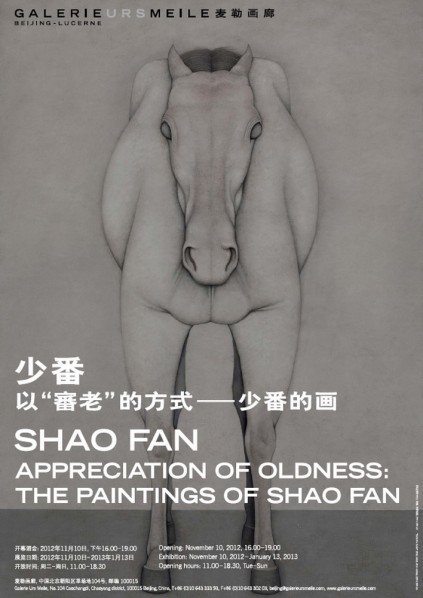
Shao Fan:
"Appreciation of Oldness: The Paintings of Shao Fan"
Galerie Urs Meile is pleased to announce the opening of Shao Fan’s very first solo exhibition at the gallery, “Appreciation of Oldness: The Paintings of Shao Fan,” in which we will showcase more than ten of his latest paintings. “Appreciation of Oldness” by Shao Fan is the central topic of the show. “Oldness” here does not indicate a physical or biological state, but rather refers to the beauty of the sublime, and is the fruit of a distillation of time and experience. “Appreciation of Oldness,” in other words, marks a return to aesthetics, and is at the same time a validation and veneration of the beauty of “oldness”. This “Appreciation of Oldness” crafted by Shao Fan uses “old” to express a sense of awe for things, a sublimation of aesthetics. These works express Shao Fan’s consistent attitude towards the aesthetics, and thus also serve as a reply to the present using a Chinese classical style.
Shao Fan’s new paintings of recent vintage convey a highly distinctive atmosphere. Pure, peaceful backgrounds enable the artist to extract the subjects - animals, landscapes and portraits - from their ambient vulgarity, thereby reducing the influence of narrative and timeliness to the bare minimum. Through the artist’s tranquil and prudent perspective, together with his unique visual language, the paintings reflect Shao Fan’s attitude towards life. As the Chinese art critic Feng Boyi comments, “Shao Fan’s paintings at the same time stand for a restoration of a sort, one marking a behavioral return to the wellsprings of visual art that re-approaches the very creation and origin of life itself through its penchant for a naturalist composition.”
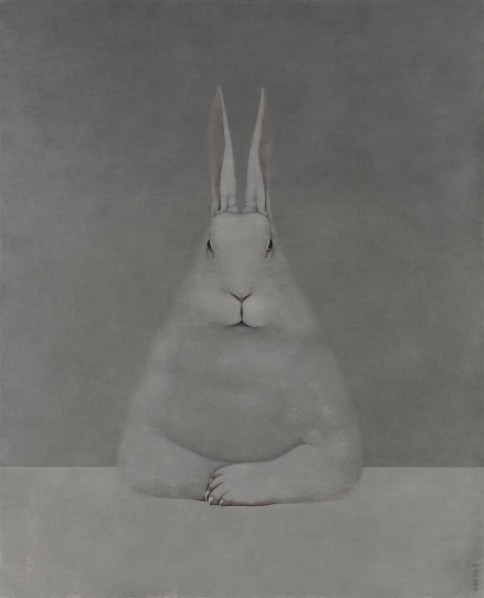
Shao Fan, Rabbit at Desk, 2012; oil on canvas, 210 x 170cm
It is truly noteworthy that the notion of “justification” in Chinese traditional culture is well represented in his recent paintings. Front of a Horse (2012, oil on canvas, 220 x 140 cm) is based on Shao Fan’s myriad studies and observations of the form and figure of the horse. As we may perceive, the artist has once again chosen a frontal perspective and, through the precise symmetrical composition that interprets the central ideal in Chinese traditional culture, thus illustrates the magnificence of justified symmetry. At the same time, with an intent to preserve objectivity, he has persisted in his own style using the technique of avoiding individual brushstrokes. With a Zen Geist and exquisite elegance, the image of the horse springs forth from the canvas, achieving the task of personification the artist assigned to it at the start, but while also exuding an unwanted aura of mystery.
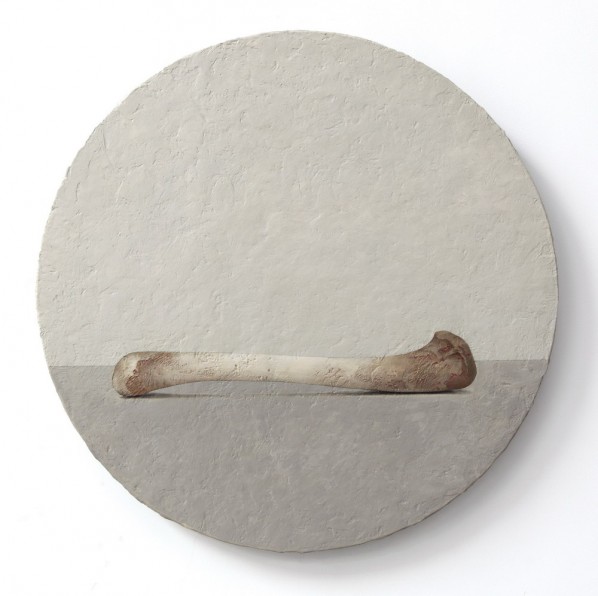
Shao Fan, Chicken Wing Bone, 2010; oil on canvas, 60 x 60cm
Painting is Shao Fan’s attitude manifesto. In his words, “Painting is the most ancient, natural, and immediate means for me to express my temperament.” That which is sought by him during these long years is best summed up in his daughter’s comment that: “The best painting is a painting which is not really like a painting.” He tries to exalt in everything except himself, and this causes his persona to fade from the resultant work. In addition to painting, Shao Fan’s creation further diversifies across a wide range encompassing sculpture, to graphic design to horticultural design. His deconstructed, recreated Chinese classical furniture won him the distinction of being the very first Chinese artist whose work is collected by the Victoria and Albert Museum in London, UK.
This exhibition is the first solo show by Shao Fan at Galerie Urs Meile. Thereafter, Galerie Urs Meile will present his retrospective in the National Museum of China in March 2013; this will afford the audience the opportunity of grasping the diversity and richness of his artistic practices. Also, the gallery will produce an extensive catalogue to commemorate this occasion of his exhibition at the National Museum.
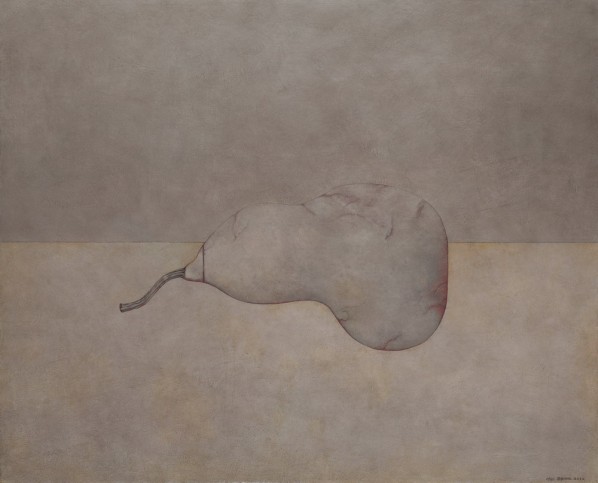
Shao Fan, Medicine, 2012; oil on canvas, 170 x 210cm
Born in Beijing, China in 1964, Shao Fan has learned painting since childhood. He currently lives and works in Beijing. His works have featured extensively at many exhibitions throughout the world. Recent group exhibitions have included “Go Figure! Contemporary Chinese Portraiture” at the National Portrait Gallery in Canberra and the Sherman Contemporary Art Foundation in Sydney, Australia; “Three Artists – One Journey” at the National Art Museum of China in 2010, and “China Garden for Living – Illusion into Reality” at Staatliche Kunstsammlung Dresden in Germany in 2008.
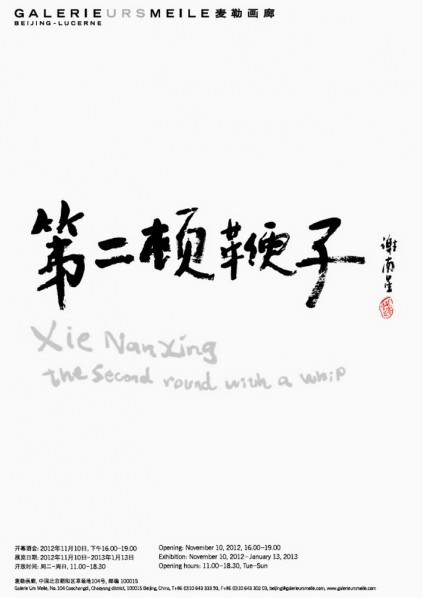
Poster of Xie Nanxing, "The Second Round with a Whip"
Xie Nanxing
"The Second Round with a Whip"
The most interesting painters today are those who remain compelled to advance the medium’s potential through experimentation and innovation. In this regard, Xie Nanxing (*1970, Chongqing, China; lives and works in Beijing and Chengdu, China) is a maverick. “THE SECOND ROUND WITH A WHIP,” his solo exhibition at the Beijing branch of Galerie Urs Meile, Beijing-Lucerne, presents two new series of large-scale oil paintings. One, informally called the Canvas Print series, is characterized by the works’ stippled surfaces. Seen over time, these whorls and dots of pigment give way to vivid scenes that are mutually constructed by the artist and the viewer. The second series on view is loosely based on illustrations found in an interior design catalogue, which Xie Nanxing transforms into spaces redolent with references both personal and historical. Thematically, the exhibition explores what the artist calls the “ashes” or “dust” found in every representation.
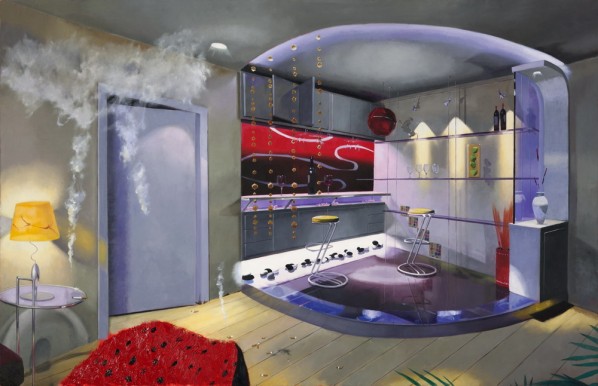
Xie Nanxing, Improvisation500(Oblivion), 2011; oil on canvas, 190 x 290cm
In the works on view in “THE SECOND ROUND WITH A WHIP,” there are no clear references to a familiar story. Instead, we are forced to look hard at what unfolds before us. To generate the exploded pointillism of the Canvas Prints, the artist places a panel of rough, woven canvas between his brush and the painting; the daubs of color that comprise the nebulous figures in the finished work are the result of paint passing through the cloth and onto the work’s surface. When the Canvas Prints are viewed with care, forms begin to emerge from the ashes: the figure of the milkmaid can be seen, and Disney’s seven dwarves appear to create some mischief. As in his previous work, the scenarios are freighted with allusions to desire and violence, though in their reduced state they cannot spell out their conditions. Like finely drawn maps of territories long ago renamed, they point to another place we can only imagine, but can also be admired for their own aesthetic qualities.
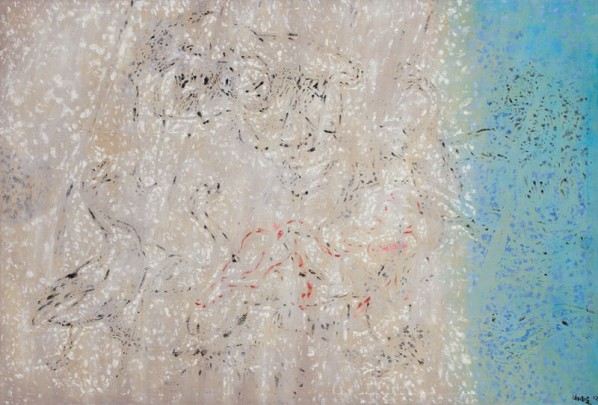
Xie Nanxing, Untitled No. 3, 2012; oil on canvas, 220 x 325cm

Xie Nanxing, Untitled No. 4,2012; oil on canvas, 185.5 x 265cm
As the German cultural critic and architect Siegfried Kracauer (1889 – 1966) observed, “Spatial images are the dreams of society. Wherever the hieroglyphics of these images are deciphered, one finds the basis of social reality.” 1 For Xie Nanxing, these hieroglyphics are etched in the fashionable rooms appearing in the pages of Dazzling Colorful Home Furnishings, a look book for would-be interior decorators whose images the artist has appropriated and customized for four of his new paintings. These works are not “about” the tastes of China’s nouveau riche. Instead, Xie Nanxing investigates how even the most innocuous pictures are crawling with symbols and associations. These include the cherished fantasies of the artistic avant-garde of the early 20th century; hence the irony implicit in the title Improvisation 500 (Oblivion) (2011, oil on canvas, 190 x 290 cm) which alludes to the Russian artistic pioneer Wassily Kandinsky’s Improvisations—a large, numbered series created with a spontaneity meant to counter the materialism of everyday commodity culture. In another of these works, Cubist Night (2011, oil on canvas, 185 x 265 cm), the hieroglyphics are personal. Shrouded in an eerie blue haze that is akin to the shade that dominates the artist’s 2008 The First Round with a Whip series, the faces of the artist’s immediate family come to surface on the model living room’s walls and furniture, haunting the room like disembodied spectres.Those who have seen Xie Nanxing’s earlier works, whether in reproduction or in major international exhibitions such as the 48th Venice Biennale (1999) and Documenta 12 (2007), can easily recall the strange beauty of his exacting executed canvases, which seldom tell us anything directly but leave us with a great deal to consider. If his recent paintings don’t look like the previous ones, this is because Xie Nanxing refuses to lapse into a signature style. The new paintings on view in “THE SECOND ROUND WITH A WHIP” may offer us the ashes of visual culture, but this exhibition invites us to stare directly into the flames.
1 “Über Arbeitsnachweise,” Frankfurter Zeitung 17 June 1930, cited in Karsten Witte, “Introduction to Siegfried Kracauer’s ‘The Mass Ornament,’” New German Critique 5 (Spring 1975), p. 63.
Text by David Spalding
About the exhibition
Date: November 10, 2012 - January 13, 2013
Opening: Saturday, November 10, 2012; 4 - 7 pm
Venue: Galerie Urs Meile
Address: NO. 104, Caochangdi Cun, Cui Gezhuang Xiang, Chaoyang District, 100015 Beijing, China
T: +86 (0) 10 643 333 93
F: +86 (0) 10 643 302 03
Courtesy of the artists and Galerie Urs Meile, for further information please visit www.galerieursmeile.com.




























